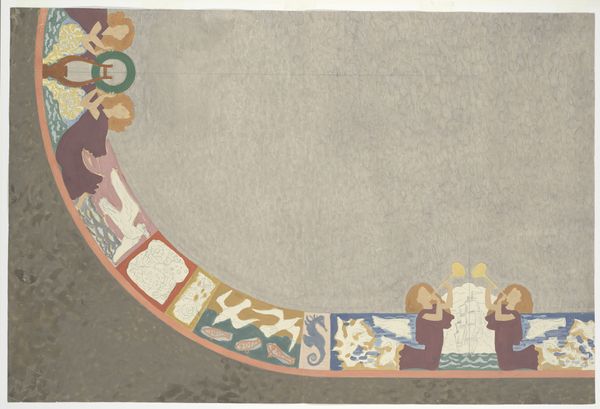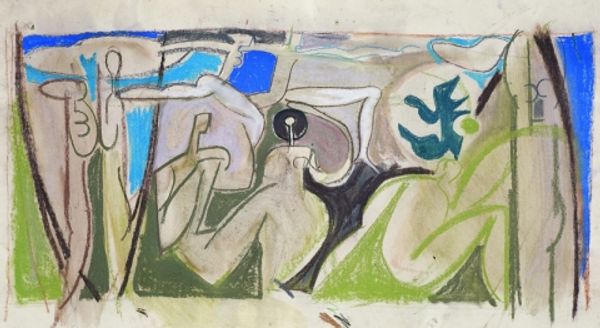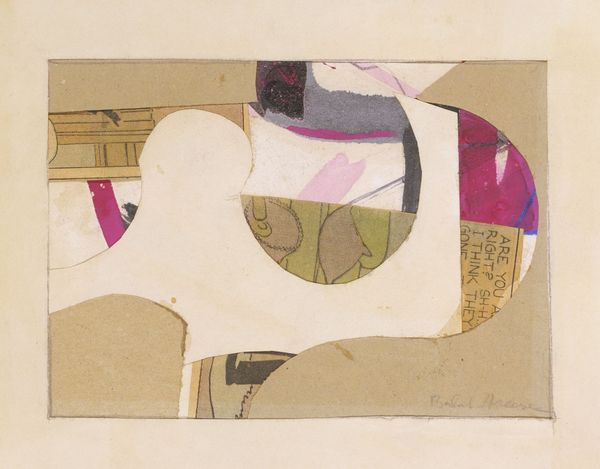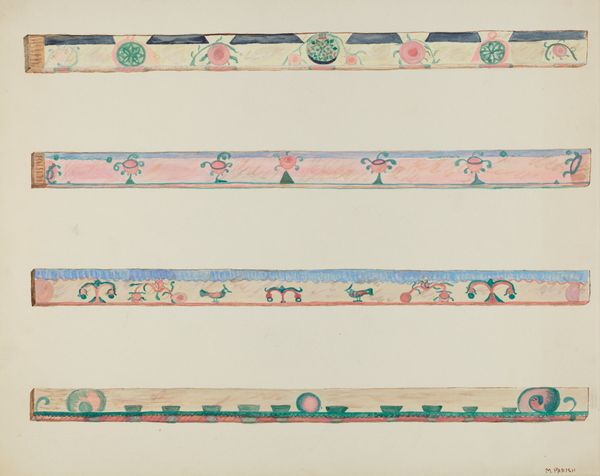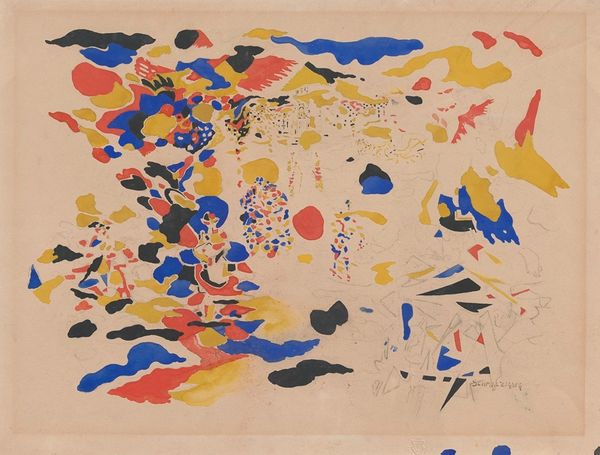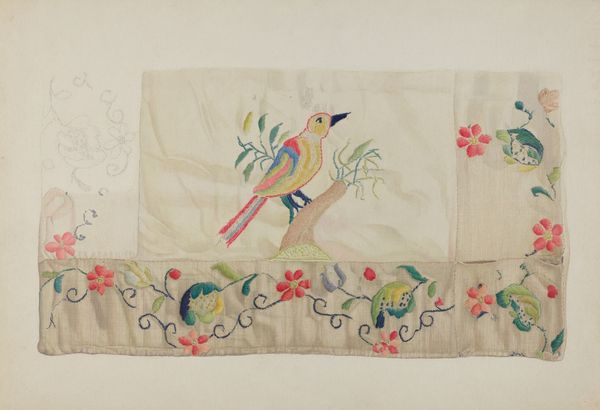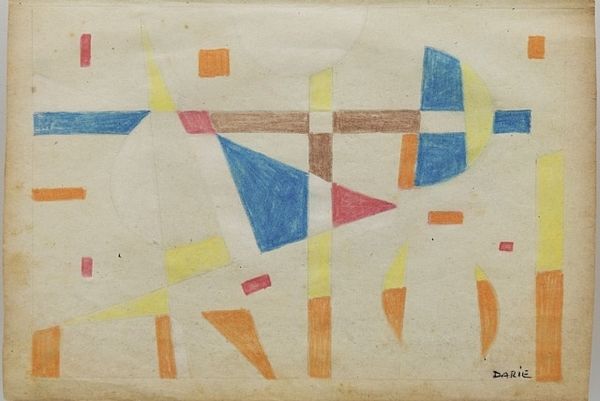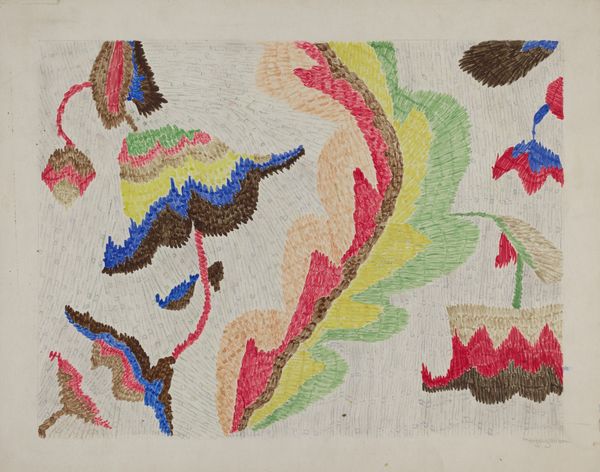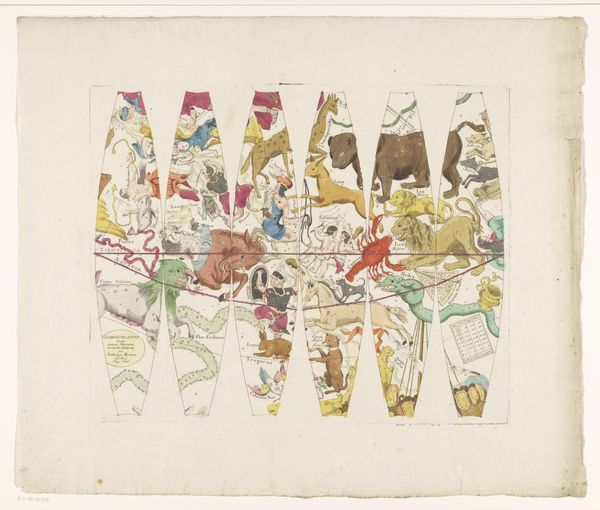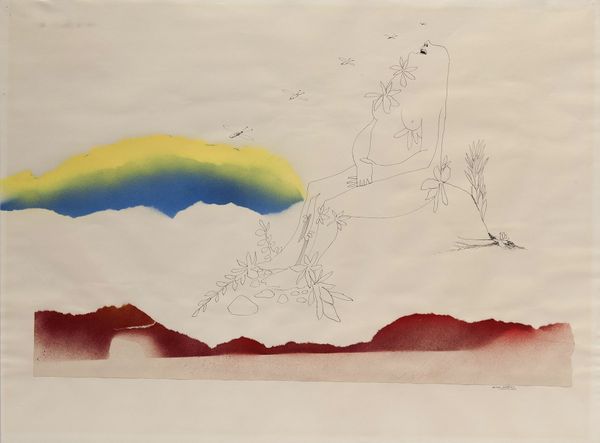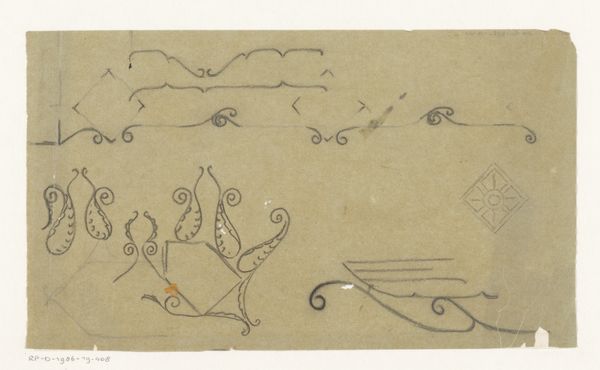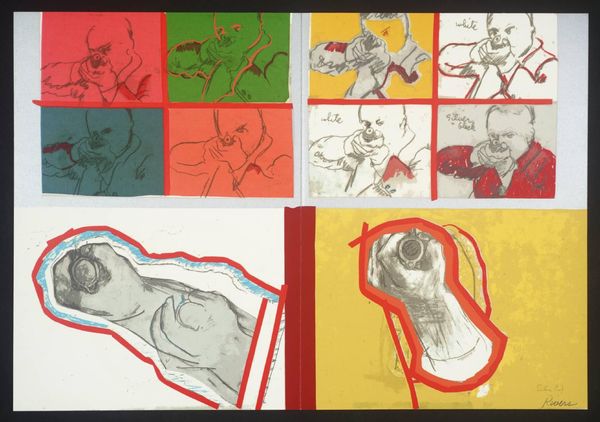![[Design for mural in unidentified bar or restaurant.] [Study for mural] by Winold Reiss](/_next/image?url=https%3A%2F%2Fd2w8kbdekdi1gv.cloudfront.net%2FeyJidWNrZXQiOiAiYXJ0ZXJhLWltYWdlcy1idWNrZXQiLCAia2V5IjogImFydHdvcmtzL2RjYTRhYjU1LTZmYjEtNDE0Zi04MWQwLWY0Mjc4M2ZiNzYwMy9kY2E0YWI1NS02ZmIxLTQxNGYtODFkMC1mNDI3ODNmYjc2MDNfZnVsbC5qcGciLCAiZWRpdHMiOiB7InJlc2l6ZSI6IHsid2lkdGgiOiAxOTIwLCAiaGVpZ2h0IjogMTkyMCwgImZpdCI6ICJpbnNpZGUifX19&w=3840&q=75)
painting, watercolor, mural
#
art-nouveau
#
painting
#
figuration
#
watercolor
#
geometric
#
cityscape
#
mural
Copyright: Public Domain: Artvee
Curator: This whimsical piece is titled "[Design for mural in unidentified bar or restaurant.] [Study for mural]," a watercolor and pencil work dating back to 1910 by Winold Reiss. Editor: My immediate reaction is… theatrical! It feels like looking at a vibrant, albeit slightly unfinished, stage set. The geometric patterns and stylized figures are so lively. Curator: Precisely. Reiss, trained in Germany, would later become a key figure in the Harlem Renaissance, celebrated for his portraiture. But this earlier work, designed for a bar or restaurant mural, showcases his Art Nouveau sensibilities filtered through a clear fascination with the urban spectacle. Editor: The choice of using harlequin figures is really interesting. Are they stand-ins perhaps, alluding to the performative nature of urban spaces, masking deeper realities of class or gender perhaps? Curator: Quite possibly. Consider the context: rapidly changing social dynamics and leisure cultures emerging in European cities at the time. Spaces such as bars were being redefined, attracting more diverse crowds. Reiss uses these figures and playful geometries in ways that challenge the traditionally elitist ideals in art at the time. Editor: And how about the checkerboard flooring that pops up at each end? That pattern seems deliberately disorienting—a deliberate challenge of what's "real". It makes me wonder what sort of patron was intended to enjoy this design. A Bohemian crowd looking for escape, maybe? Curator: That's a solid argument! Reiss likely tailored this proposal towards clients who prized daring innovation. While ultimately uncommissioned, the mural still captures an important intersection between visual culture and the dynamics of early 20th century social spaces. Editor: Knowing that, one could almost call this a subtle rebellion against the conventions of that period, don't you think? These stylized dancers really evoke a unique experience within the rapidly expanding urban environment of the time. Curator: Exactly. We often forget that behind the "establishment art" so to speak, there was always active critique and alternative perspectives pushing boundaries. Looking back it’s nice to be able to identify how the imagery helps create our understanding of what those cultures looked like. Editor: A good reminder that artistic expressions of past eras help shed a vibrant, sometimes rebellious light on the nuances of those ever evolving societal shifts.
Comments
No comments
Be the first to comment and join the conversation on the ultimate creative platform.
